Author Archives:Lydia Sampson

26
JulChill Out, New England
 We all know that one of the great benefits of living in New England is that we get to experience all the seasons. Our iconic foliage draws busloads of tourists every autumn, we usually get to have a white winter holiday season, and our landscape becomes furiously and gloriously alive every spring. As a result, our New England summers can feel all too brief, and many residents look forward to summer all the rest of the year.
We all know that one of the great benefits of living in New England is that we get to experience all the seasons. Our iconic foliage draws busloads of tourists every autumn, we usually get to have a white winter holiday season, and our landscape becomes furiously and gloriously alive every spring. As a result, our New England summers can feel all too brief, and many residents look forward to summer all the rest of the year.
While we’re busy bundling up for the other seasons though, we can sometimes forget just how hot and humid our New England summers can be. Heat waves seem to surprise us because they don’t happen very often in the course of a year – remember that stretch of 90+ degree heat a few weeks ago? Brutal, right? And no wonder we feel this way – in the course of June 2018 we went from chilly spring temperatures in the 40s to blazing 92F, according to AccuWeather.com. That’s a pretty big difference, especially after what seemed like a prolonged winter.
I’m fully aware that we don’t deal with nearly the temperature extremes experienced in other parts of the United States or the world. For instance, according to Weather.com the city of Quriyat in Oman in the Middle East just broke a world record for the highest low temperature in a 24-hour period, a whopping 108.7F. However, New England is quite humid, and therefore we tend to “feel” temperatures more acutely. In the course of a year, our weather changes from -40F to over 100F, with some areas of our region experiencing temperatures more extreme in either direction. From freezing pipes and frost heaves to the baking sun and high humidity, our roads and buildings have to stand up to a lot.
At this point, you’re probably asking yourself if I’m seriously writing an article about the weather. (In May she wrote about statistics and algorithms in dating apps, and this month it’s the weather? Does this lady even get out?) Fooled you! I’m actually writing about how to keep cool and comfy in the summer without air conditioning at home. On some level we’re all getting used to air conditioning in public buildings, but as long as you don’t have a health condition that necessitates cool temps, do you need to invest in air conditioning at home in the Northeast?
There are some good reasons to go without AC if you can help it. Lowering your electric bill is a good motivation, since once you turn on the AC unit there’s a strong temptation to leave it running for most of the day. The cost of an air conditioner can also be prohibitive, as well as the hassle of properly installing the unit. Also, there’s a lot of joy in hearing birdsong and other sounds of summer coming through the window, which is drowned out by the chugging of an air conditioner. Plus, there’s the principle of the matter – there’s something perverse about turning on an air conditioner for a small amount of comfort when human activity is responsible for rising global temperatures in the first place.
Passive cooling measures are easier than you think; they just take a little bit of planning. It’s an awful feeling to get to work and realize a storm is heading your way on a day you decided to leave some windows open to catch the breeze. A few easy tips include: close the shades during the day, especially on the sides of your house that catch the sun; close the windows on the sunny sides of your house, though you may decide to leave windows cracked on the shady sides of your house if cool air is blowing in; as soon as the evening temperature drops lower than the temperature inside your house, open those windows and enjoy the night breeze; use window fans to draw in extra cool night air if the day has been especially hot, making sure to crack another window to help the fan work as efficiently as possible; avoid stove or oven cooking if you can help it, and instead eat cold foods like salad or use a slow cooker to keep from heating up your kitchen. For even more practical tips for keeping cool and conserving energy, especially if you’re planning a remodel project, check out these books from the library: The Carbon Buster’s Home Energy Handbook by Godo Stoyke, The Energy Wise Home by Jeff Dondero, True Green Home by Kim McKay, and This Cold House by Colin Smith.
We have lots of cookbooks with slow cooker recipes. Browse our cookbook section on the Mezzanine level next time you’re in, and keep an eye out for titles like The Everything Healthy Slow Cooker Cookbook, The Slow Cooker Revolution, and The Chef and the Slow Cooker.
Swim, wear loose fitting clothing, eat ice cream – and when we hit a streak of 90+ degree weather and all else fails – come to the library. We have free air conditioning, and lots of books and great programs all summer long.
Liz Reed is an Adult and Information Services Librarian at the Morrill Memorial Library in Norwood, Massachusetts. Read Liz’s column in the July 26, 2018 issue of the Norwood Transcript and Bulletin.
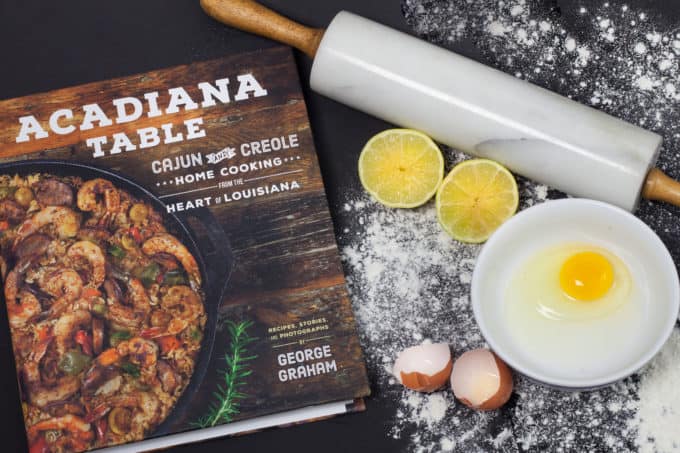
19
JulFirst, You Take a Cajun Swamp Tour. Next, You Make a Creole Roux.
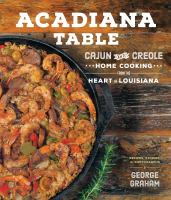 In The World on a Plate (2014), Mina Holland describes 40 world cuisines and the “stories behind them.” Reading her book, you travel across Europe and down through the Middle East, east to Asia and south to Africa. She ends the book with the “melting pots” of the Americas: the Dutch, Spanish and Portuguese influences in South America and the French, Polish, Germany, African and Asian inspirations to the north.
In The World on a Plate (2014), Mina Holland describes 40 world cuisines and the “stories behind them.” Reading her book, you travel across Europe and down through the Middle East, east to Asia and south to Africa. She ends the book with the “melting pots” of the Americas: the Dutch, Spanish and Portuguese influences in South America and the French, Polish, Germany, African and Asian inspirations to the north.
Of these 40 world’s cuisines, only the regions of California and Louisiana are included a mention in Holland’s book. A California Salad is dressed with Asian ingredients. BBQ corn is smothered with Cajun seasoning, accompanied by crawfish, and grits. Holland’s explanation is that most of Europe left its mark on the Northeast and the Midwest. Spain, through Mexico, impacted the South-Northwest. Yet, Louisiana cuisine is a unique rich blend of French, Spanish, Caribbean and Native American cultures and food.
We’ve heard of Cajun Shrimp. Creole Gumbo. Yet, Cajun and Creole cooking can be confused. They are very separate – and somewhat the same. A Louisiana travel site simplifies the differences by explaining that Creole is “city food” and Cajun is “country.” Another clarification is that Creole uses tomatoes and Cajun never does. Think gumbo and jambalaya and this explanation can fit.
The Cajuns were immigrants from French Canada – the Acadians. Acadia was a colony of New France that included parts of Quebec, the Maritime provinces (New Brunswick, Nova Scotia, and Prince Edward Island), and what we know now as the state of Maine. As early as the mid-1700s, Acadians traveled south to Louisiana on the Mississippi River or by ship along the Atlantic. In Louisiana, “Acadian” was shortened, very simply, to Cajun. The Acadians brought their spices and foods with them to the Gulf Coast.
Creole in French means “a person not indigenous to the country or land.” The word in Spanish is criollo. In Louisiana the meaning is more distinct with the Creole culture sometimes described as a blend of the French, Spanish, African and Native American.
I was lucky enough to visit Louisiana, specifically New Orleans, during one of the hottest weeks of this past June – the last full week before the Fourth of July holiday. As I grew to understand (from Lyft drivers and bartenders), the tourists vacate New Orleans after July 4. The tourist season officially ends then and tired New Orleans hotel and restaurant and bar staff finally get a break from the hectic, nearly year-round party in the Big Easy.
The American Library Association knows its members well – librarians who are on lean personal and professional budgets. For that reason, ALA’s conferences are held in some of the hottest locales in the country in the summer (Anaheim, Washington DC, and Las Vegas) and the coldest cities in the winter (Chicago, Boston, and Indianapolis).
This year was no exception, of course, when the NOLA (New Orleans, LA) humidity made 95 degree weather practically unbearable during the conference held June 21 through the 26 at the Ernest N. Morial Convention Center along the Mississippi River.
My conference week (spent mainly indoors in the kilometer-long air-conditioned convention center) ended midweek and two of my hardy, best friends since 7th grade arrived for a girls-only Louisiana adventure. The three of us moved into a lovely hotel, complete with center garden, just steps from Bourbon Street. Together, we braved the New Orleans heat, learned of its illustrious history, and ate our way through its impossibly-delicious cuisine for five wonderful days.
I had already discovered the best fresh, hot beignets, bowls of gumbo, chargrilled oysters, and sippable drinks before my girlfriends arrived. So, we gobbled oysters at Dragos and sipped Sazeracs at the Public Belt. We hopped on and off the tour bus and visited the Garden District, Tremé, the French Market, and Canal and Tchoupitoulis Streets. At the original Café du Monde we guzzled coffee accompanied by beignets that were smothered in mounds of confectionary sugar (somewhat like puffed fried dough).
We braved a buggy ride behind a hairy mule (the mules fare much better than horses in the heat) and learned oodles about the architecture of New Orleans, including the restrictions for homes in the Historic District. We walked with some trepidation along Bourbon Street with its rowdy crowds, crisscrossing the French Quarter to our chosen nightly restaurants and cocktail bars. We tasted a Pimm’s Cup, a French 75, and a Viuex Carre in a Nick and Nora finely-etched glass.
There were many highlights of our girls’ vacation, but two are of the type none of us will ever forget.
The first was a swamp tour along the West Pearl River, reached by a 45-minute drive north of New Orleans and over the eight-mile bridge spanning Lake Pontchartrain. The bridge is new and it sits directly next to the ruins of the previous one destroyed in 2005 by Hurricane Katrina. Once on the bayou, our tour guide commanded his pontoon boat for a little over 2 hours along the swamps lined with Bald Cypress trees and filled with very visible alligators. He sidled up to a luscious shrub and offered us a pungent bay leaf, different than we had ever smelled before. He pulled up close to where a red fern grew from a lone river log. We three women from California and Massachusetts, and our local tour guide from the bayou, spent much of the time talking recipes and cuisine, serenaded by afternoon cicadas and shaded by overhanging swamp growth.
The second experience was a hands-on cooking class at the New Orleans Cooking School. While it is a business that caters to the tourist, it was also an adventure like no other. For 2-1/2 hours we three each had our own kitchen island complete with induction stove and all the equipment and ingredients we needed to make Cajun Gumbo, Beef Grillades with Grits, and Bananas Foster (complete with flame and magic dust.) We drank spicy Bloody Marys, local craft beer, and ate our own creation of three courses of deliciousness accompanied by our teacher/chef’s stories of Cajun and Creole lore.
There are many books throughout the libraries of the Minuteman Library Network. We have four of the best that will help you to navigate the Cajun and Creole cuisines.
Ten years after Hurricane Katrina, Cooking Up a Storm (2005) was re-published in 2015. The book was originally compiled as recipes “lost and found” by the Times-Picayune and stories and recipes of New Orleans’ culinary heritage. George Graham’s Acadiana Table (2016) includes traditional Louisiana recipes and some brand-new options. We have John Besh’s Besh Big Easy (2016). The author of the bestselling cookbook My New Orleans (2009), owner of twelve restaurants and host of two public television shows has written a fourth book about his native Creole cuisine. Another television cooking celebrity, Kevin Belton, has written New Orleans Kitchen, published this year. If you can’t make a trip to New Orleans, you can let the good times roll, Cajun or Creole-style in your own home.
Charlotte Canelli is the Director of the Morrill Memorial Library in Norwood, Massachusetts. Read Charlotte’s column in the July 19, 2018 edition of the Norwood Transcript and Bulletin.

12
JulCity Girl, Country Girl
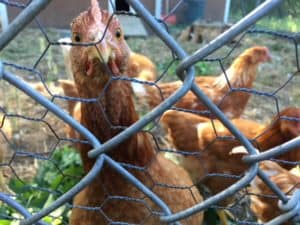 As a kid I dreamed of living in the Big City. On weekends my mom and I drove into Boston from the suburbs to shop at the iconic Filene’s Basement. I got such a thrill out of walking through the scary “Combat Zone,” past shops and restaurants in Chinatown, and arriving at “The Basement,” where we shielded each other and tried on clothes in the aisles, and I learned math by figuring out the “automatic markdowns.” The variety of different people in the city fascinated me and I longed to live among them some day.
As a kid I dreamed of living in the Big City. On weekends my mom and I drove into Boston from the suburbs to shop at the iconic Filene’s Basement. I got such a thrill out of walking through the scary “Combat Zone,” past shops and restaurants in Chinatown, and arriving at “The Basement,” where we shielded each other and tried on clothes in the aisles, and I learned math by figuring out the “automatic markdowns.” The variety of different people in the city fascinated me and I longed to live among them some day.
Indeed, after college I moved to Boston where I lived for the next 20 years or so- in a cockroach-infested apartment in Brighton, in three different makeshift artist lofts downtown, and then in a duplex I owned with a friend in Jamaica Plain. I got married, my husband and I consolidated our two households of “stuff” into one apartment, my friend got married and had two children, they moved out, and we decided to follow suit. We felt cramped and had become homebodies taking little advantage of the convenience of nearby restaurants and amenities or our proximity to the T. We also got sick of the occasional sounds of gunshots and all-night parties of nearby neighbors.
In 2015 we took the plunge and moved to Holliston, to a home we fell in love with- a house on a two and a half acre lot with a garden, a swimming pool, a brook, lovely landscaping, and lots of privacy. Oh, and a chicken coop. We went from one extreme to the other, and while I had dabbled in container gardening and watched my parents manicuring their lawn and planting shrubs and annuals, I needed a crash course in country living!
I set a goal, to at least avoid killing all the beautiful plants during the first year. With books like Pruning Basics by David Squire I did teach myself “the basics” of pruning rhododendrons, roses of Sharon, and lilacs. I kept a log book of what came up when: hellebore and daffodils first, followed by irises and poppies, and at this time of year various lilies, daisies and roses. Martha Stewart’s recent Martha’s Flowers provided great ideas for arranging and displaying cut flowers to bring the beauty of the yard inside the house.
Facing a daunting fenced-in garden, I set to work watching YouTube videos and scouring Improving Your Soil by Keith Reid. I learned about prepping soil, rented a rototiller, bought seeds, and planned the layout. Companion planting (see Louise Riotte’s Carrots Love Tomatoes) became a passion. I ended up with too many zucchinis and cucumbers, and relied on Bittman’s trusty How to Cook Everything Vegetarian to make use of it all. Imagine my pride serving guests garden-fresh salads and arugula walnut pesto, followed by cucumber mint sorbet.
The property did not come with chickens, and I insisted on waiting for a year before acquiring any. We had enough to learn during the first year. On the anniversary of moving in, I brought 6 tiny chicks home and delved into the study of keeping them happy and alive. For anyone with the capacity and will to venture into chicken parenting, the library has Storey’s Guide to Raising Chickens, and A Kid’s Guide to Keeping Chickens, if the children want to help. To get a feel for the way chicken-owners become attached to their flocks, watch the hilarious documentary Chicken People.
Of course, with chickens come abundant eggs. We didn’t realize just how many eggs! Fortunately I received Rachel Khong’s All About Eggs, and Eggs, by Michel Roux, as gifts. For the library’s volunteer appreciation get-together I made “Green Goddess Deviled Eggs” from the library’s D’lish Deviled Eggs cookbook, and they got rave reviews.
Our country oasis surprised us over and over. I discovered Concord grapes growing along a fence and into the trees, and learned a bit about canning and preserving (see DIY Canning). I posted a photo of a weird brain-like mushroom and found out we had precious morels! This prompted the purchase of Foraging New England. Although strange mushrooms frighten me, I delight in harvesting wild berries, chard, and rogue tomato plants that manage to self-seed in the woods.
Home ownership is not all fun and games though. Having never maintained a pool before, I discovered What Color is Your Swimming Pool. With so much space to fill with more and more stuff, I finally read Kondo’s The Life-Changing Magic of Tidying Up, and learned to de-clutter. Just because you have room for it doesn’t mean you need to keep it and crowd your living space with junk.
Sometimes I miss the variety of restaurants in Boston, and I don’t like the long ride to and from the city when visiting friends or attending events, but at this stage in life, I definitely prefer being a country girl. A Zen-like calm comes over me while gardening, and after reading my grandmother’s memoir about farm life in Lithuania, I wonder whether this knack is in my DNA. As I listen to songbirds, “peeper” frogs, and even the silence of winter- when I smile watching the silly chickens or discovering that the peonies have bloomed, I have no regrets about moving.
Lydia Sampson is the Head of the Technical Services Dept. at the Morrill Memorial Library in Norwood, Massachusetts. Read Lydia’s column in the July 12, 2018 edition of the Norwood Transcript and Bulletin.
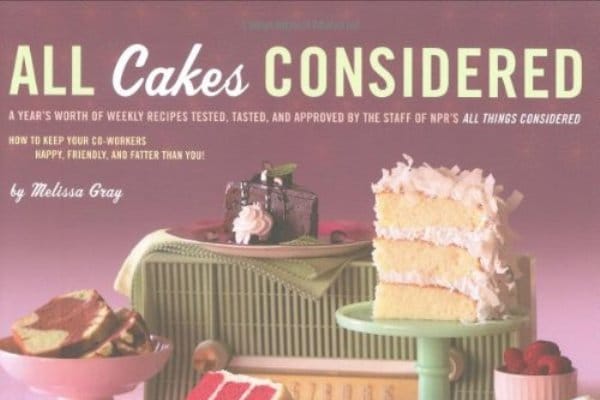
28
JunMaking Radio Waves
 A few weeks ago, I found myself dashing into the house yelling “Alexa, play NPR!” As my smart speakers all came to life simultaneously, my husband and I pulled up chairs on the deck to enjoy one of our favorite radio programs, “Live From Here” (formerly “Prairie Home Companion”). While my husband and I enjoy listening to audiobooks and podcasts on our own, we are one of those rare households that still crowd around the radio at appointed times every week to hear our favorite NPR hosts introduce us to new music, keep us updated on current events, share stories, or give us hilarious car repair advice.
A few weeks ago, I found myself dashing into the house yelling “Alexa, play NPR!” As my smart speakers all came to life simultaneously, my husband and I pulled up chairs on the deck to enjoy one of our favorite radio programs, “Live From Here” (formerly “Prairie Home Companion”). While my husband and I enjoy listening to audiobooks and podcasts on our own, we are one of those rare households that still crowd around the radio at appointed times every week to hear our favorite NPR hosts introduce us to new music, keep us updated on current events, share stories, or give us hilarious car repair advice.
I’ve come to realize that public radio is such an important part of my life. I am up earlier than the rest of my family and most days the hosts on “Morning Edition” are the first voices that I hear each day. Jim and Margery from “Boston Public Radio” keep me company as I do short training rides on my lunch break and I look forward to my drive home with Kara Miller from “Innovation Hub” when I work late on Thursdays. Weekends wouldn’t be complete without laughing with the folks from “The Best of Car Talk” and “Wait, Wait Don’t Tell Me.”
Because we are all such obsessive NPR listeners, I bought tickets for my husband, sister, and me to go see “Live from Here” at Tanglewood in a few days. I am looking forward to the performance, but I wonder how different it will be to add a visual experience to something that is usually just auditory. With that in mind, I did a little research to see if there were other non-radio ways that I could get my NPR fix. As it turns out, there are many!
While I expected to find cookbooks from Milk Street Radio’s Christopher Kimball, I did not expect to find All Cakes Considered: a Year’s Worth of Weekly Recipes Tested, Tasted, and Approved by the Staff of NPR’s All Things Considered by Melissa Gray. This delightful book gives some insight into the favorite confections of NPR staff and one highly recommended recipe for Sweet Potato Pound Cake (among many others). I just can’t wait until the sweet potatoes in my garden are ready to pick so I can give it a whirl.
In poking around the internet in search of books by NPR authors, I realized that I completely forgot about my favorite political commentator, Cokie Roberts. She has written a whole slew of titles, most notably Founding Mothers, Capitol Dames, and Ladies of Liberty. All of these books center around the women that have shaped our nation. Founding Mothers is nothing short of inspiring and is an informative, but genuinely interesting read- perfect for the upcoming Independence Day holiday.
When I really thought about it, there are many, many opportunities to enjoy great radio content outside of the airwaves. Sure, I love listening to “Travel with Rick Steves,” but I haven’t left for a big trip in the last decade without consulting one of his travel guides. Similarly, Will Shortz might be the “Weekend Edition” puzzle master, but the crosswords he writes or edits appear in the New York Times each day.
Once in a while, I find myself having one of those “driveway moments,” where I have arrived at my destination, but need to finish listening to the story before turning off the car. Now that I know there are so many other ways to hear more from these fantastic journalists, I might spend less time sitting alone in the car with my hand hovering over the ignition and more time curled up on the couch with a book.
Alli Palmgren is the Technology Librarian at the Morrill Memorial Library in Norwood, Massachusetts. Read Alli’s column in the June 28, 2018 issue of the Norwood Transcript and Bulletin.
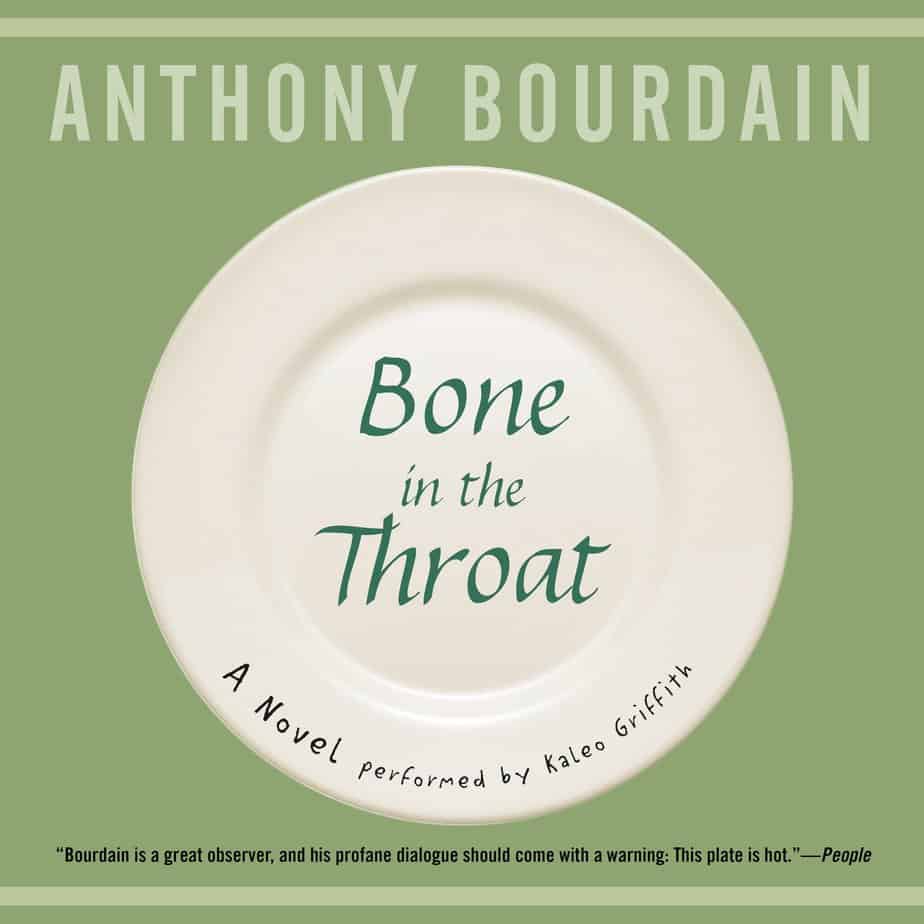
21
JunThe Light and Darkness of Anthony Bourdain
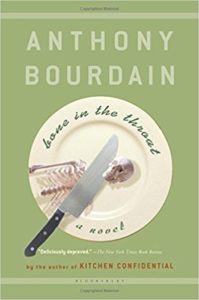 Anthony Bourdain described himself as a child being irresistibly drawn to the headiness of fresh, raw oysters in France. As a young man he was lured to the restaurant kitchen, to the love of food, and the thrills of the unsavory truths of working in food service. Throughout Kitchen Confidential, he admits his attraction to the dark and risky, to drugs and drinking, and to a life spent in restaurants and at bar tables. In that memoir, Anthony Bourdain invited us on a ride through “the culinary underbelly” of the kitchens, freezers, and back alleys of New York City restaurants.
Anthony Bourdain described himself as a child being irresistibly drawn to the headiness of fresh, raw oysters in France. As a young man he was lured to the restaurant kitchen, to the love of food, and the thrills of the unsavory truths of working in food service. Throughout Kitchen Confidential, he admits his attraction to the dark and risky, to drugs and drinking, and to a life spent in restaurants and at bar tables. In that memoir, Anthony Bourdain invited us on a ride through “the culinary underbelly” of the kitchens, freezers, and back alleys of New York City restaurants.
In 1973 Anthony Bourdain left his somewhat affluent home and a New Jersey private preparatory school for college. Vassar – an elite, selective all-women’s college – had opened its doors to men in 1969, just four years before his arrival. Yet, after only two years there, Bourdain dropped out. He had already spent time in Provincetown as a restaurant dishwasher and he had high praise for that job, explaining that he had to learn to work with others, to be on time, and to treat his superiors with respect. It was a few years later, after he returned to school (graduating in 1978 from the Culinary Institute of America in Hyde Park) that he began moving up the line as cook, sous chef, and finally to running restaurants on his own. It was also in these intimate kitchen settings in the 1980s where he became addicted to heroin and cocaine.
After his death by suicide last week, Bourdain was sometimes described by his critics as the fool-mouthed loser, the swaggering rogue, or the lowlife addict. His fans, however, know him more as a man who rose above his addictions to free himself of drugs by the early 90s (Bourdain received at least five years of treatment from methadone clinics). It was around 1994 that a friend challenged Bourdain to write. Bourdain had been a bright student, one who was well-read and who had always found writing easy. And so, Bourdain wrote.
In 1995, his mystery thriller Bone in the Throat was published. The book, described as “deliciously depraved” by New York Times reviewer Marilyn Stasio, is extremely funny and very irreverent. A body washes up on a New Jersey beach after being dumped in the New York Harbor and Bourdain begins to introduce us to his characters – SoHo hipsters, Mafiosos, flirty women and very bad men. They reminded me of Carl Hiaasen’s losers – those hanging around the Everglades and the Florida Keys.
Bourdain followed his first novel with Gone Bamboo in 1979 and again mixed mayhem, assassins and lots of tequila in another murderous swill. He was disappointed with his novels’ lack of the mainstream success. Yet, both were reprinted in paperback editions and Bone in the Throat, with Bourdain as an executive producer, was made into a film. (It did, however, receive mixed reviews and the DVD of the movie does not seem to have been released. There’s no sign of it on Amazon or Netflix).
In 2000, when he was 44 years old and the executive chef at New York’s Brasserie Les Halles, Bourdain decided to write about the life as he knew it – the behind-the-scenes, more often seedy, always raw and steamy, restaurant scene. What began as an essay for The New York Press (a local free-rag) ended up in the very respectable New Yorker magazine as “Don’t Eat Before Reading This.” Soon after, the full-length version published as Kitchen Confidential hit the bookshelves. That book appealed mainly to those who worked behind the scenes and façade of the linen-tablecloth’d, maître-d’d front room of the finest (and not-so-finest) eating establishments around the world. But it also quickly gained fame and readers clamored for more. Bourdain followed with A Cook’s Tour, which included a television show produced in 2000 and 2001 and aired beginning in 2002. This deep dive into world food became a hit on the Food Network and his faithful viewers loved his honest, often humble, sometimes macho take on the world’s dining tables.
At 44, rugged, handsome and charismatic Bourdain had the country, and the world, hooked. Yet, he admits at this time he was working to make ends meet. He had been married to Nancy Putkoski for over twenty years, from his addict days through his first literary and television successes. Finally, it seemed that he had won over some of his earlier demons – those of feeling a failure and a fraud. Anthony Bourdain’s Les Halles Cookbook was published in 2004, followed by Nasty Bits (2006), No Reservations (2007), and Medium Raw (2010).
Bourdain’s respectful celebrity grew with 35 episodes of A Cook’s Tour (2002-2003), nine seasons and 142 episodes of No Reservations. By the time of his death by suicide on June 2018, Bourdain had written 13 books and he was the immensely successful journalist/celebrity/host of the CNN program, Parts Unknown in its 11th season. He was, however, twice divorced (although that second divorce had not been finalized).
After his death, the world focused on Bourdain’s critical acclaim and the crucial need to prevent other deaths by suicide. Yet, many readers’ questions will be answered in his books when he shared his passions and his demons. He was inspired by books and reading. He loved passionately, especially as a father. Yet, he often spoke of the darkness and loneliness in his life.
In Anna Karenina, Leo Tolstoy wrote that “Happy families are all alike; every unhappy family is unhappy in its own way.” In the introduction to one of his last books, Appetites: A Cookbook, Anthony Bourdain writes that “Tolstoy never spent any time with my happy family.” At the time of publication, Bourdain’s daughter was 8 years old and it might have been Bourdain’s happiest time. He had finally found fame, wealth, and at the same time, contentment with his wife and daughter and professional life. Bourdain traveled about 260 days a year, yet he always carved out a five-day respite every month to spend with his daughter. He writes, in that introduction, that he made major changes in his lifestyle when his daughter was born. He was no longer “the star in his own movie.”
Every talk show featuring Bourdain and every speech he wrote portrayed an honest, humble man who was accessible and approachable. He rarely turned down an interview or an opportunity to write the introduction to another cook’s book. By the age of 61, he seemed to have overcome the personal failures of his youth. I have huge respect for the man and it has saddened me that his demons still lurked below the surface of success. A history of good food, adventurous eating and honest philosophy in his books is what Bourdain has left behind for us.
Charlotte Canelli is the Director of the Morrill Memorial Library in Norwood, Massachusetts. Read Charlotte’s column in the June 21, 2018 edition of the Norwood Transcript and Bulletin.
